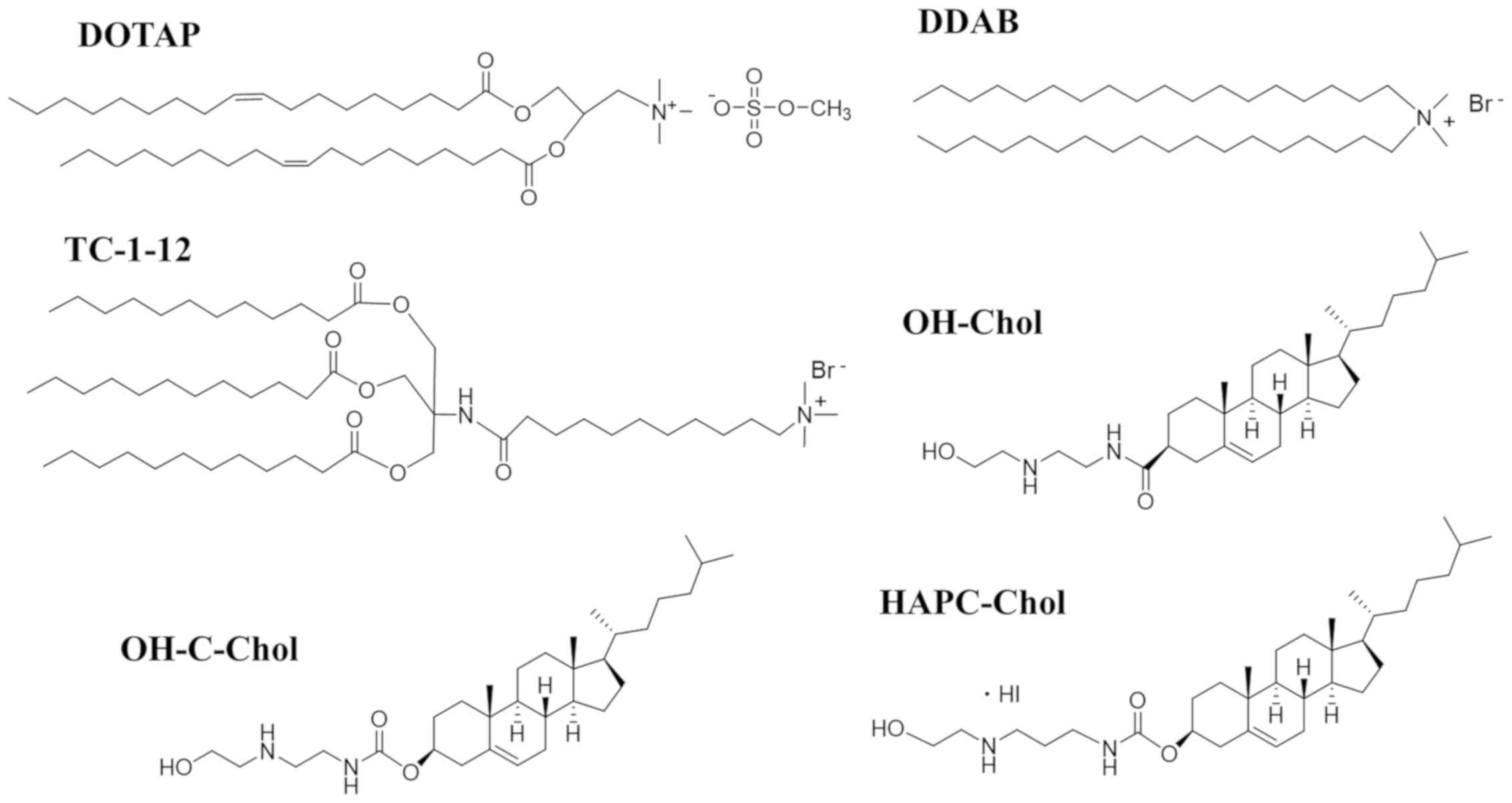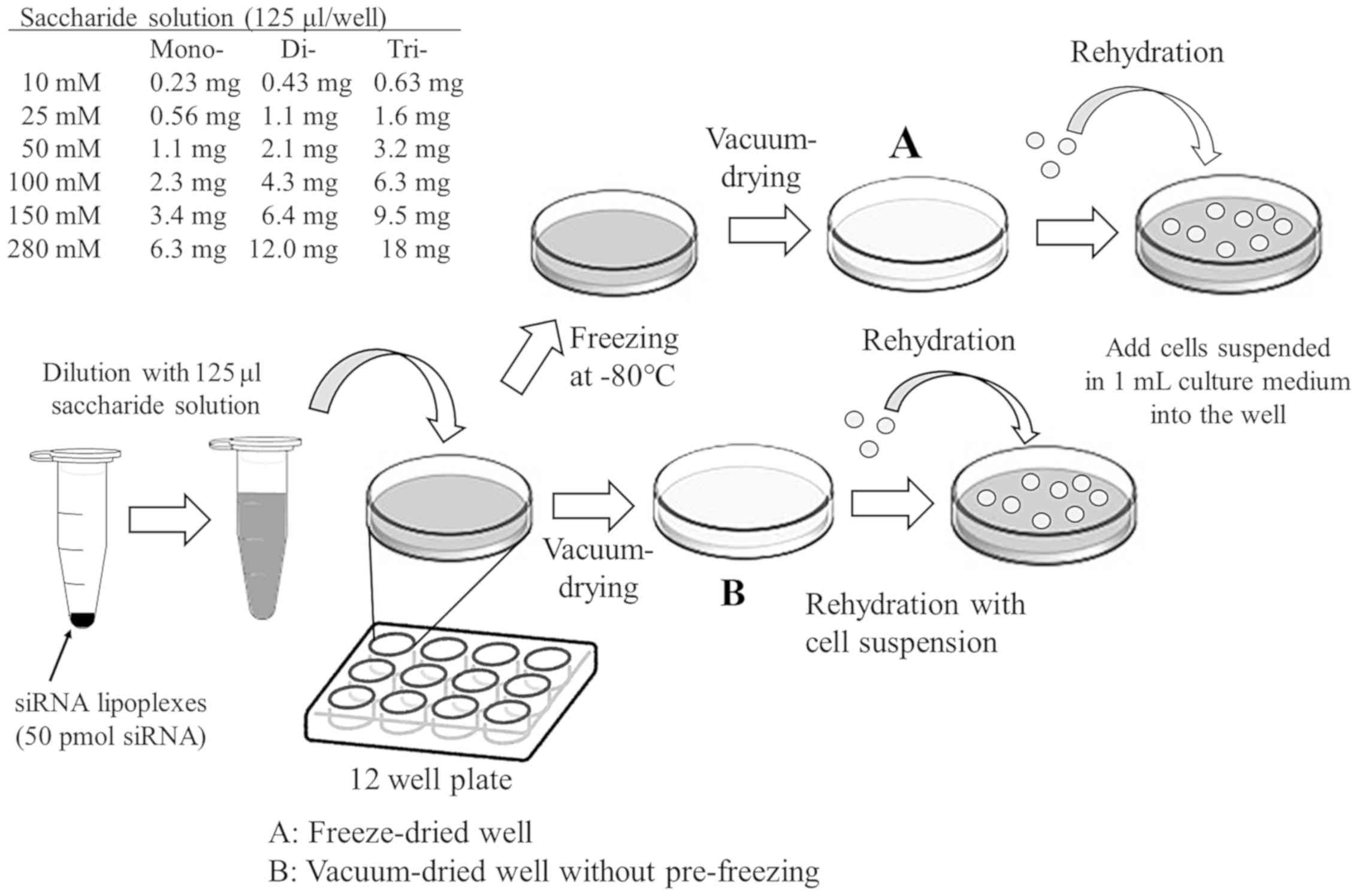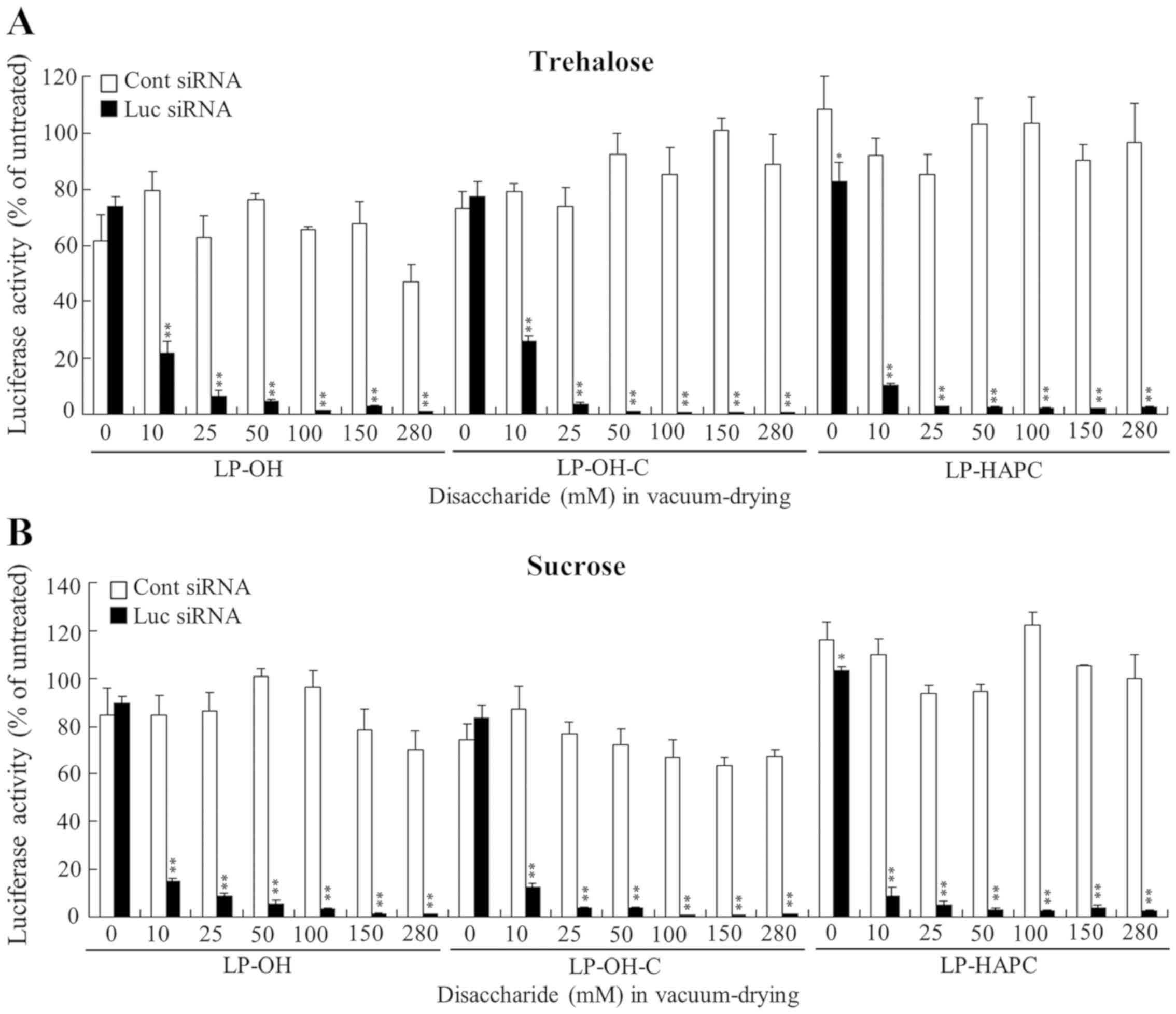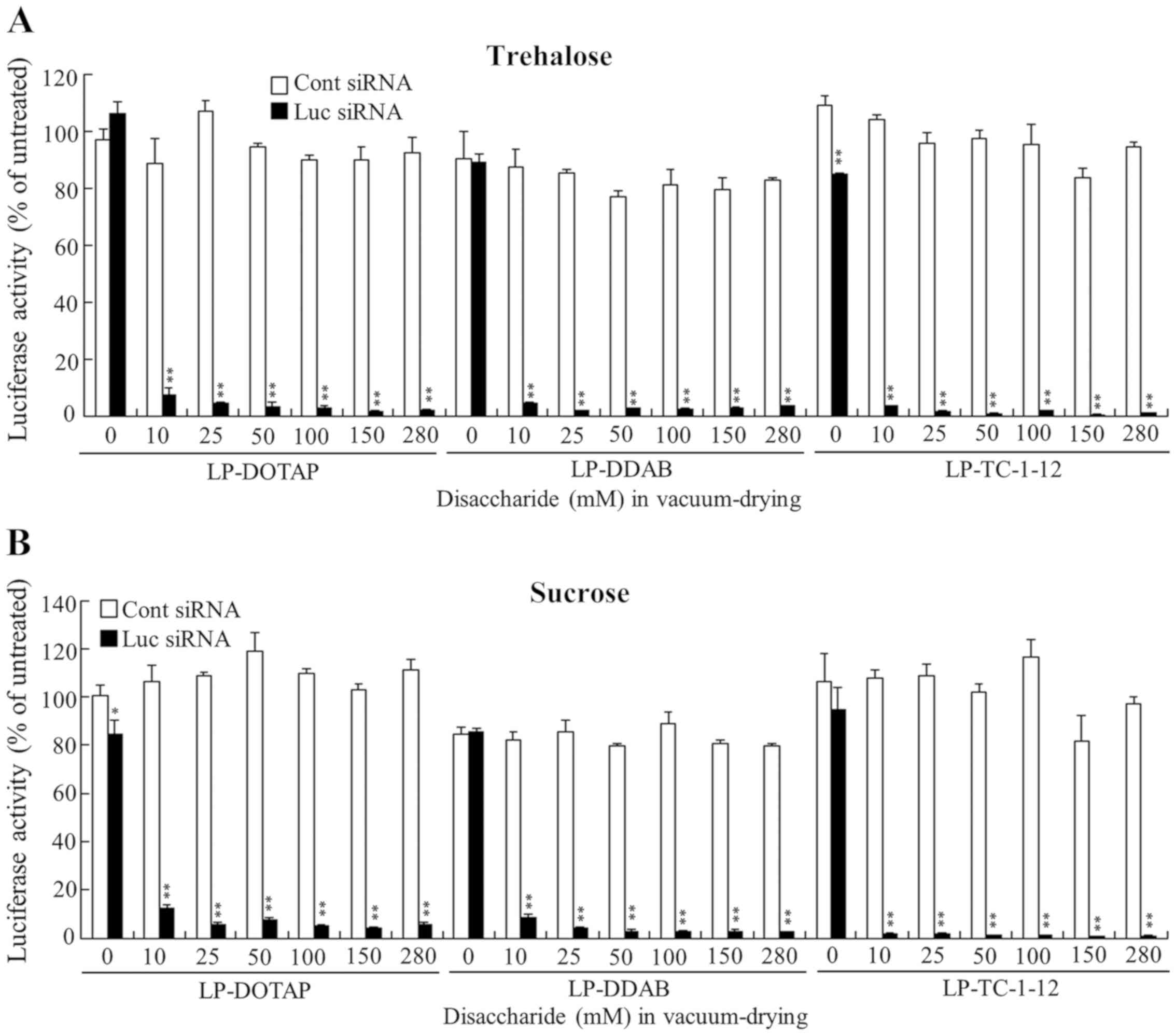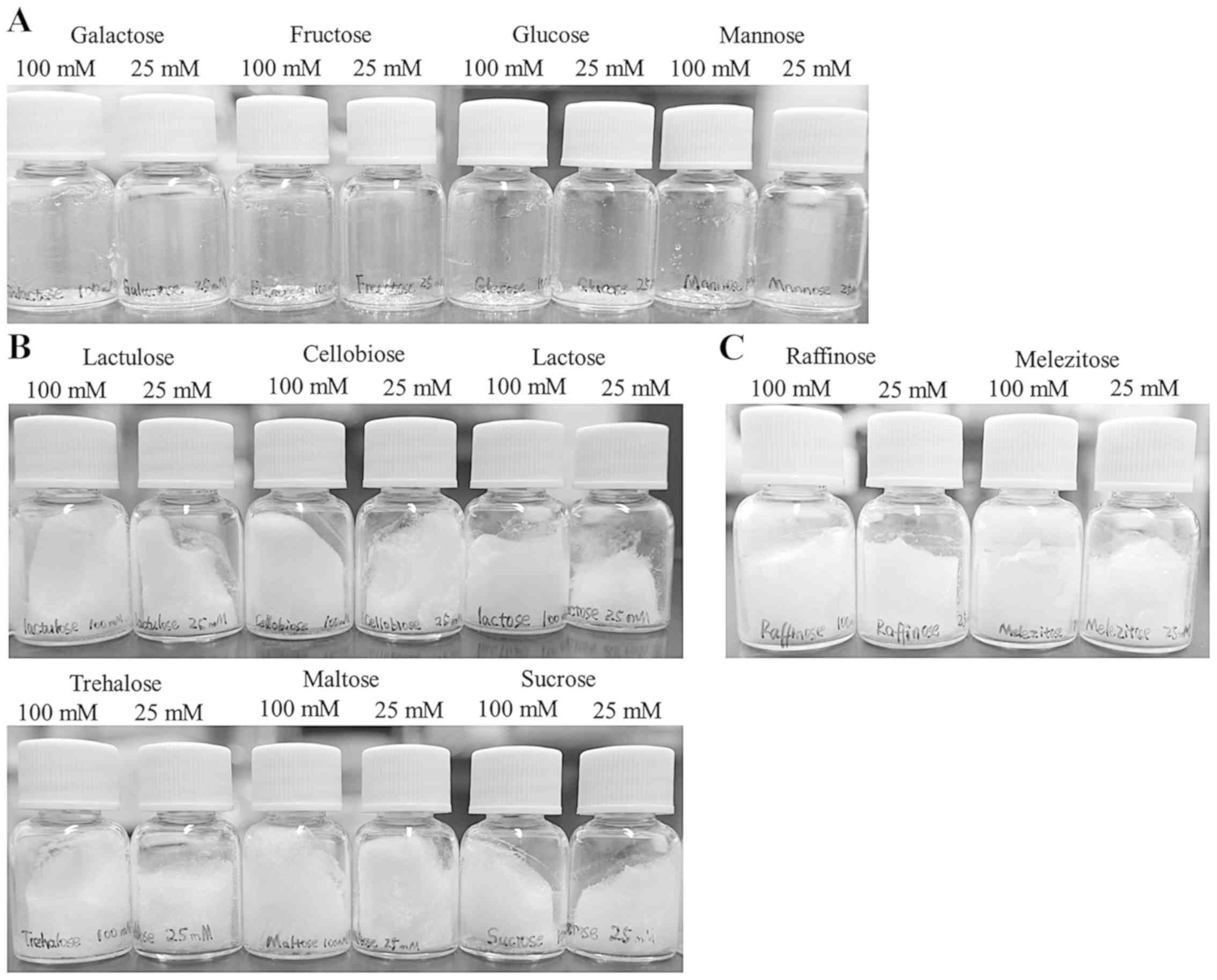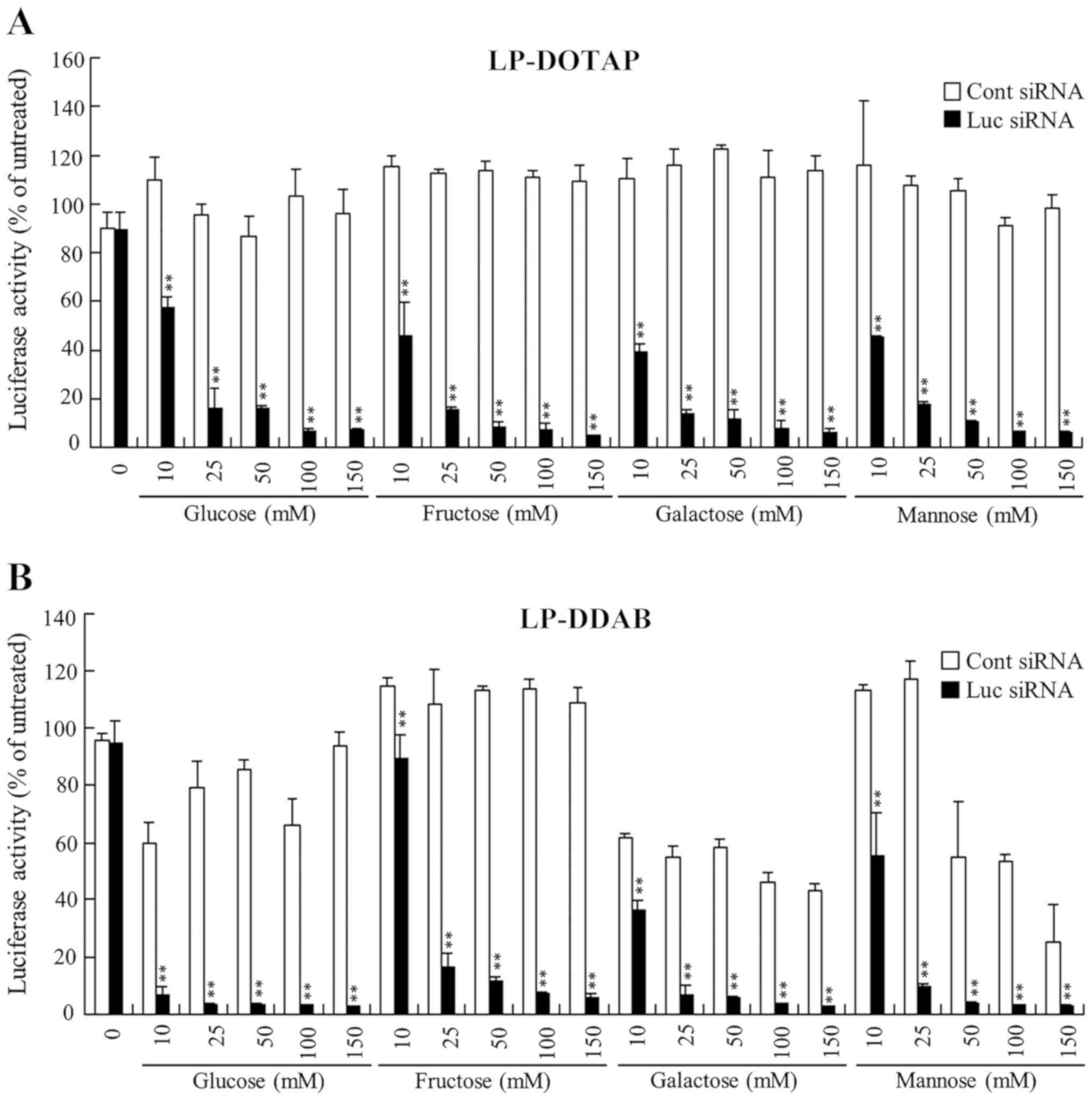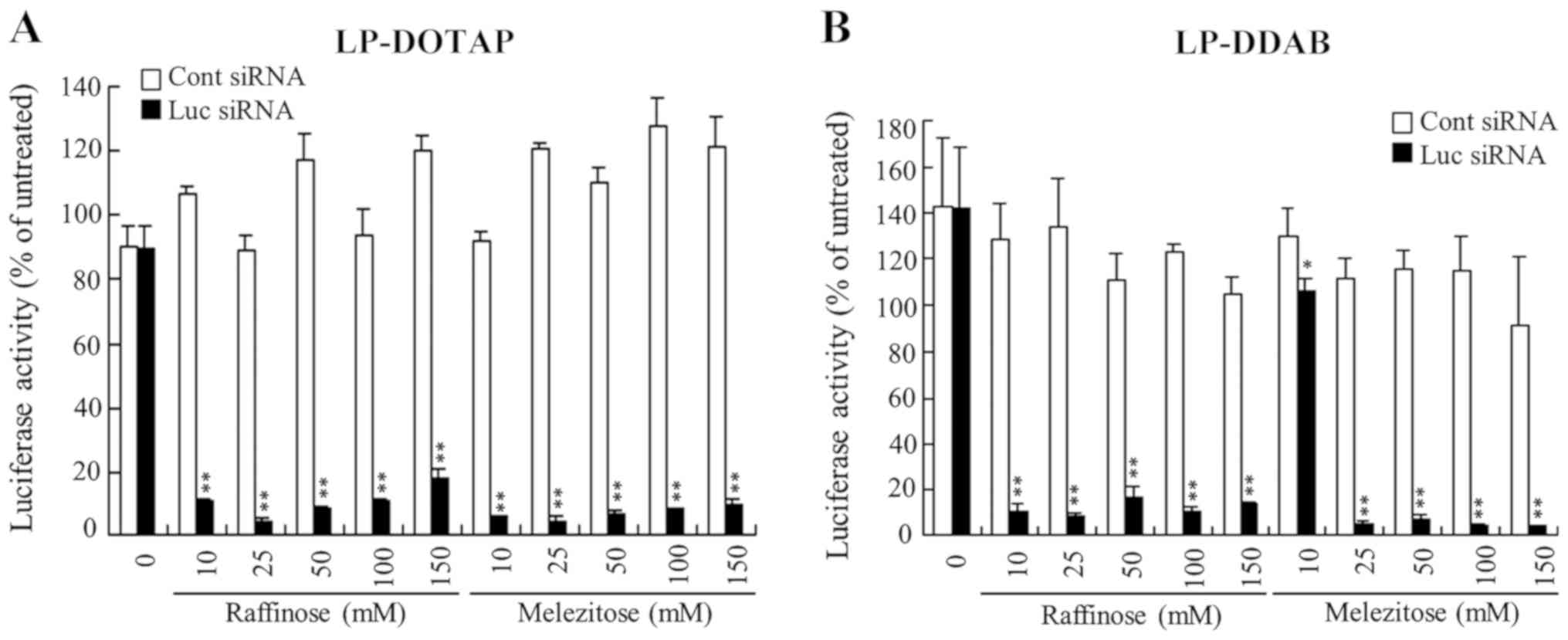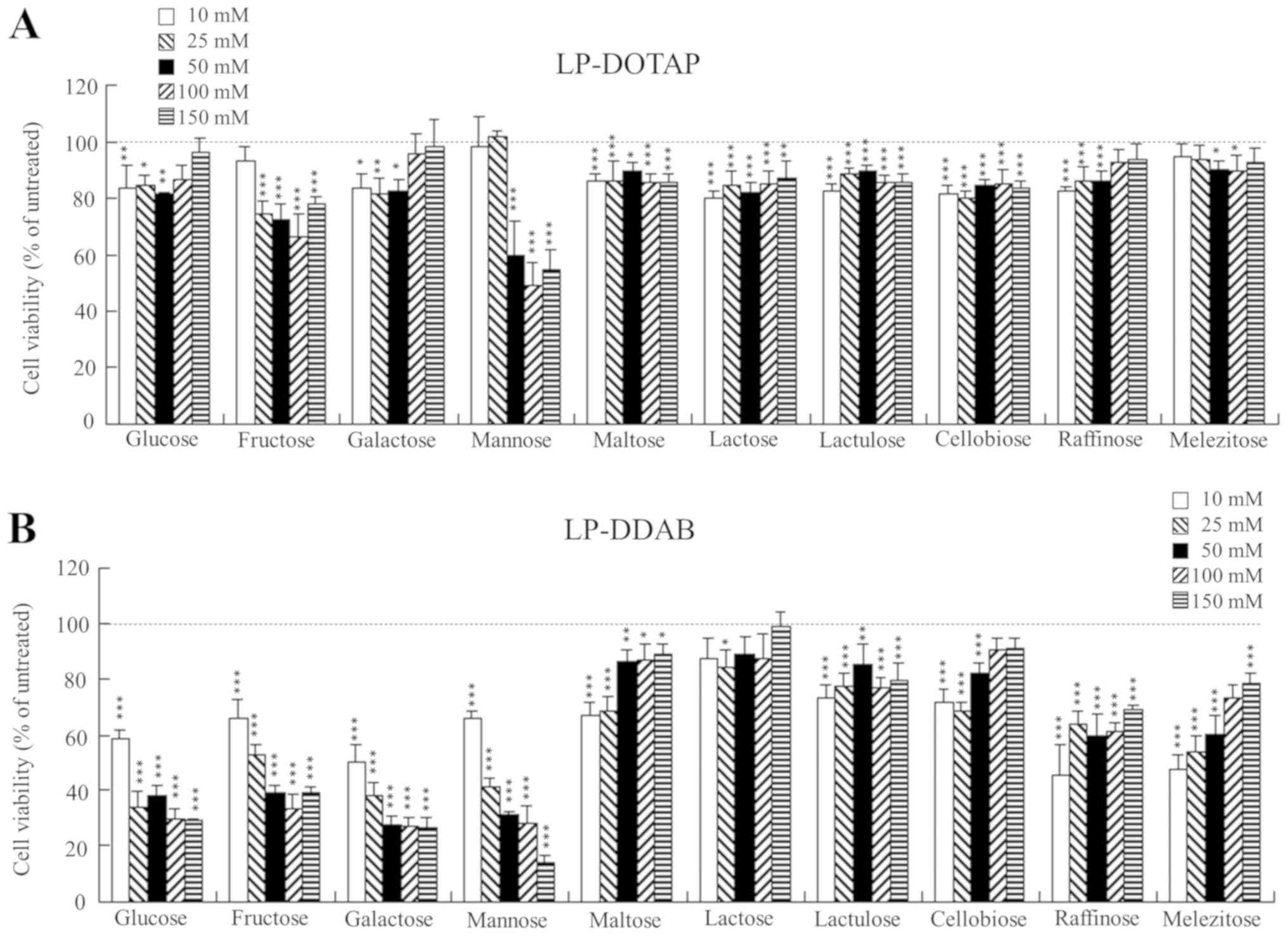|
1
|
Wilson RC and Doudna JA: Molecular
mechanisms of RNA interference. Annu Rev Biophys. 42:3233–239.
2013. View Article : Google Scholar
|
|
2
|
Erfle H, Neumann B, Liebel U, Rogers P,
Held M, Walter T, Ellenberg J and Pepperkok R: Reverse transfection
on cell arrays for high content screening microscopy. Nat Protoc.
2:392–399. 2007. View Article : Google Scholar : PubMed/NCBI
|
|
3
|
Zhang S, Zhi D and Huang L: Lipid-based
vectors for siRNA delivery. J Drug Target. 20:724–735. 2012.
View Article : Google Scholar : PubMed/NCBI
|
|
4
|
Chen C, Han D, Cai C and Tang X: An
overview of liposome lyophilization and its future potential. J
Control Release. 142:299–311. 2010. View Article : Google Scholar : PubMed/NCBI
|
|
5
|
Franzé S, Selmin F, Samaritani E,
Minghetti P and Cilurzo F: Lyophilization of liposomal
formulations: Still necessary, still challenging. Pharmaceutics.
10:1392018. View Article : Google Scholar
|
|
6
|
Yadava P, Gibbs M, Castro C and Hughes JA:
Effect of lyophilization and freeze-thawing on the stability of
siRNA-liposome complexes. AAPS PharmSciTech. 9:335–341. 2008.
View Article : Google Scholar : PubMed/NCBI
|
|
7
|
Andersen MØ, Howard KA, Paludan SR,
Besenbacher F and Kjems J: Delivery of siRNA from lyophilized
polymeric surfaces. Biomaterials. 29:506–512. 2008. View Article : Google Scholar : PubMed/NCBI
|
|
8
|
Kundu AK, Chandra PK, Hazari S, Ledet G,
Pramar YV, Dash S and Mandal TK: Stability of lyophilized siRNA
nanosome formulations. Int J Pharm. 423:525–534. 2012. View Article : Google Scholar : PubMed/NCBI
|
|
9
|
Ball RL, Bajaj P and Whitehead KA:
Achieving long-term stability of lipid nanoparticles: Examining the
effect of pH, temperature, and lyophilization. Int J Nanomedicine.
12:305–315. 2016. View Article : Google Scholar : PubMed/NCBI
|
|
10
|
Fujita S, Ota E, Sasaki C, Takano K,
Miyake M and Miyake J: Highly efficient reverse transfection with
siRNA in multiple wells of microtiter plates. J Biosci Bioeng.
104:329–333. 2007. View Article : Google Scholar : PubMed/NCBI
|
|
11
|
Wu K, Xu J, Liu M, Song W, Yan J, Gao S,
Zhao L and Zhang Y: Induction of osteogenic differentiation of stem
cells via a lyophilized microRNA reverse transfection formulation
on a tissue culture plate. Int J Nanomedicine. 8:1595–1607.
2013.PubMed/NCBI
|
|
12
|
Hattori Y, Hu S and Onishi H: Effects of
cationic lipids in cationic liposomes and disaccharides in the
freeze-drying of siRNA lipoplexes on gene silencing in cells by
reverse transfection. J Liposome Res (In press).
|
|
13
|
Ding W, Hattori Y, Higashiyama K and
Maitani Y: Hydroxyethylated cationic cholesterol derivatives in
liposome vectors promote gene expression in the lung. Int J Pharm.
354:196–203. 2008. View Article : Google Scholar : PubMed/NCBI
|
|
14
|
Hattori Y, Hara E, Shingu Y, Minamiguchi
D, Nakamura A, Arai S, Ohno H, Kawano K, Fujii N and Yonemochi E:
siRNA delivery into tumor cells by cationic cholesterol
derivative-based nanoparticles and liposomes. Biol Pharm Bull.
38:30–38. 2015. View Article : Google Scholar : PubMed/NCBI
|
|
15
|
Hattori Y, Nakamura T, Ohno H, Fujii N and
Maitani Y: siRNA delivery into tumor cells by lipid-based
nanoparticles composed of hydroxyethylated cholesteryl triamine.
Int J Pharm. 443:221–229. 2013. View Article : Google Scholar : PubMed/NCBI
|
|
16
|
Hattori Y, Nakamura M, Takeuchi N, Tamaki
K, Shimizu S, Yoshiike Y, Taguchi M, Ohno H, Ozaki KI and Onishi H:
Effect of cationic lipid in cationic liposomes on siRNA delivery
into the lung by intravenous injection of cationic lipoplex. J Drug
Target. 27:217–227. 2019. View Article : Google Scholar : PubMed/NCBI
|
|
17
|
Hattori Y, Nakamura A, Arai S, Kawano K,
Maitani Y and Yonemochi E: siRNA delivery to lung-metastasized
tumor by systemic injection with cationic liposomes. J Liposome
Res. 25:279–286. 2015. View Article : Google Scholar : PubMed/NCBI
|
|
18
|
Abdelwahed W, Degobert G, Stainmesse S and
Fessi H: Freeze-drying of nanoparticles: Formulation, process and
storage considerations. Adv Drug Deliv Rev. 58:1688–1713. 2006.
View Article : Google Scholar : PubMed/NCBI
|
|
19
|
Hattori Y, Nakamura M, Takeuchi N, Tamaki
K, Ozaki KI and Onishi H: Effect of cationic lipid type in
PEGylated liposomes on siRNA delivery following the intravenous
injection of siRNA lipoplexes. World Acad Sci J. 1:74–85. 2019.
|
|
20
|
Crowe LM, Crowe JH, Rudolph A, Womersley C
and Appel L: Preservation of freeze-dried liposomes by trehalose.
Arch Biochem Biophys. 242:240–247. 1985. View Article : Google Scholar : PubMed/NCBI
|
|
21
|
Reinisalo M, Urtti A and Honkakoski P:
Freeze-drying of cationic polymer DNA complexes enables their
long-term storage and reverse transfection of post-mitotic cells. J
Control Release. 110:437–443. 2006. View Article : Google Scholar : PubMed/NCBI
|















